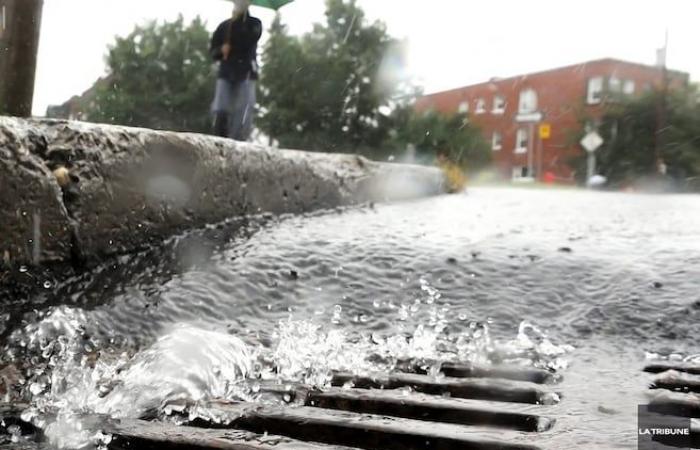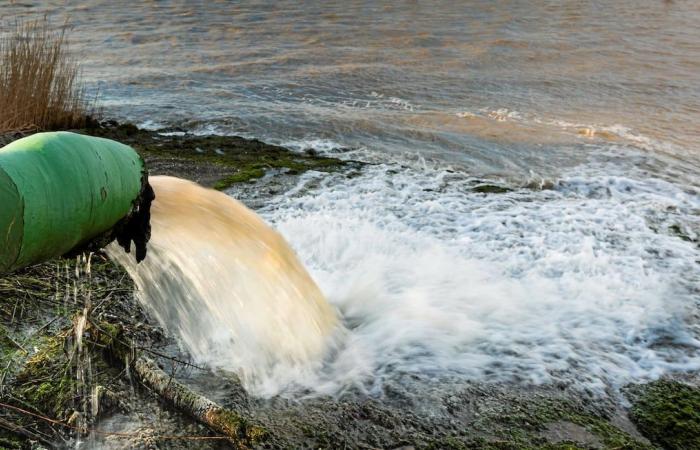The Law has learned that the City is currently developing a “provisional control regulation” (RCP) which would have the effect of pausing the issuance of many new building permits. Residential and commercial projects complying with zoning would thus be put on ice for a period which is currently indefinite. The ban would go as far as prohibiting the construction of just one additional unit in problem areas. The development of a parental home in the basement of an existing house could even be refused in these locations.
According to our information, the municipal council would be called upon to decide on such a regulation at the beginning of 2025. The moratorium would initially be in force for a period of two years.
The law, however, allows the control regulation to be renewed once it has expired if the situation is not corrected. A freezing effect must come into force upon submission of the draft regulation. According to our information, the scope of the RCP could target 100% of the territory, but exceptions would accompany the regulatory document in order to authorize development in places which are not problematic, particularly in the west.
Building permits for zoning-compliant projects could be put on hold for a few years in Gatineau. (Simon Séguin-Bertrand/Archives Le Droit)
Fragmented information has already begun to circulate within the construction and housing industry. The issue of infrastructure capacity was the subject of a preliminary discussion at the housing shock committee in recent months and the municipal council was recently made aware, behind closed doors, of the possibility of a such regulation by the senior management of the City.
Reaction from the mayor
“I am not confirming anything,” said the mayor of Gatineau, Maude Marquis-Bissonnette, when asked to react to the information from RightFriday. The latter, however, recognized that infrastructure capacity issues force the City to establish a strategy for the future development of its territory.
“It’s true that we are wondering how we are able to increase predictability for promoters,” she said. At the moment, there are entrepreneurs, in certain sectors, who have compliant projects to which we say no because our engineers are stuck [en raison d’enjeux de capacité des infrastructures en eau] and this is not acceptable. What we must be able to do is to direct development in sectors where there is capacity. The goal is to create predictability for entrepreneurs.”
Gatineau Mayor Maude Marquis-Bissonnette. (Patrick Woodbury/Archives Le Droit)
Just last Friday, the municipality of Chelsea, during a special municipal council, unanimously adopted an RCP targeting its village center due to a lack of filtration capacity and drinking water supply . The imposition of a moratorium on development due to drinking and waste water management problems is a new power that was granted to cities by the Quebec government in 2023. Last June and July, some small municipalities elsewhere in the provinces have started to implement the same regulation. Other large cities such as Sherbrooke and Lévis are reportedly under consideration.
Non-compliant overflows
Issues related to the capacity of municipal infrastructure to support real estate development are nothing new in Gatineau, particularly in the west. The problem currently at hand specifically concerns wastewater overflows. It is mainly concentrated east of the Gatineau River. It has been extensively documented over the years. The subject was also the subject of a public presentation to the council in July 2022.
An overflow is an infrastructure adjacent to the sewer and sanitary network which helps protect the wastewater treatment plant against overflows during heavy rains or during melting snow.
When the treatment plant becomes at risk of overflowing, overflows allow wastewater to be discharged into the river or streams. Each overflow structure must be approved by the Quebec government. The most recent compilation produced by the Rivières Foundation reveals that there were 1,021 wastewater spills in Gatineau in 2023. The total would reach 8,697 since 2017.

The most recent compilation produced by the Rivières Foundation reveals that there were 1,021 wastewater spills in Gatineau in 2023. The total would reach 8,697 since 2017. (123RF)
In the summer of 2022, the City of Gatineau’s infrastructure department specified that 23 of the 74 overflows in the basin of the wastewater treatment plant on rue Notre-Dame, in the Gatineau sector, required correction because they were at risk of non-compliance. Seven were already identified as non-compliant. Around fifty others still needed to be analyzed, around thirty of which were deemed to be at greater risk of becoming problematic.
The 2024-2029 Water Management Plan adopted by the municipal council in December 2023 provides for the postponement of development and densification in the service basins of 67 overflows. According to our information, a little less than half of the City’s overflows are currently deemed non-compliant or on the verge of becoming so by the infrastructure department. This proportion is only likely to increase if the City continues to approve new construction projects in problem areas.
Long and expensive work
The Quebec government no longer allows cities to approve new construction in areas served by overflows that are non-compliant or could become non-compliant due to a capacity problem. A grace period which will end in 2030 allows the City to continue to approve construction projects on the condition of demonstrating that the corrective work to the overflows will be carried out before the finalization of the development projects. It has now been agreed by the City of Gatineau’s public works department that it will be impossible to carry out the necessary fixes in time.
According to our information, the City estimates that under current conditions, it would take a minimum of three years of planning and implementation per overflow to be corrected. Preliminary cost estimates included in the development plan which probably no longer hold water today specified in 2015 that investments of $14 million would be necessary to “improve” the overflows. To “eliminate” them, a sum of more than 300 million should be spent by 2050. The Investment Plan in Infrastructure Maintenance adopted by the municipal council last year only plans to devote 2.5 million to the problem of overflows. million per year by 2028.
Neglect?
The region’s construction industry strongly fears the imposition of a moratorium on residential and commercial development in Gatineau. The adoption of an “interim control by-law” which has the effect of postponing development on a strip of a few meters along Vanier Road in order to protect the right of way necessary for its widening was sufficient, a year ago , to raise numerous criticisms.

Nicolas Brisson, general director of the Association of Construction and Housing Professionals of Quebec in Outaouais (APCHQ) (Archives Le Droit, Patrick Woodbury /Archives Le Droit, Patrick Woodbury)
This time the scale would be completely different. The general director of the Association of Construction and Housing Professionals of Quebec (APCHQ) in Outaouais, Nicolas Brisson, recently learned of the plan studied by the City of Gatineau. However, he specifies that he has no information on the locations targeted by the possible RCP, nor on the number of new housing units that would become impossible to build.
“What we wonder is how the City was able to get to this point,” he said in an interview with Le Droit. Was there negligence in the transmission of information between the different City services? Gatineau residents have paid a dedicated infrastructure tax of 1% for years precisely to do this kind of catching up. Where did the money go? How long has the City known that it has a problem of this magnitude on its hands?”
The City adopted a development plan in 2015, and new zoning grids in 2021, recalled Mr. Brisson. Its plan is to densify existing neighborhoods, as well as public transport routes. “Promoters have made strategic acquisitions of land to align with the City’s plans,” insists the general director of the APCHQ. We are in the middle of a housing crisis and the City is going to block the development of its territory because its wastewater infrastructure no longer meets demand. It’s very serious. The City must demonstrate transparency, as quickly as possible.”









